This post may contain affiliate links. Please read our disclosure policy.
If your recipe requires that you know how to measure flour, follow these simple steps for perfect baked goods!
Whether you are baking up a fresh Peach Cobbler or homemade Pie Crust it’s important to get the correct amount of flour for the perfect taste and texture!
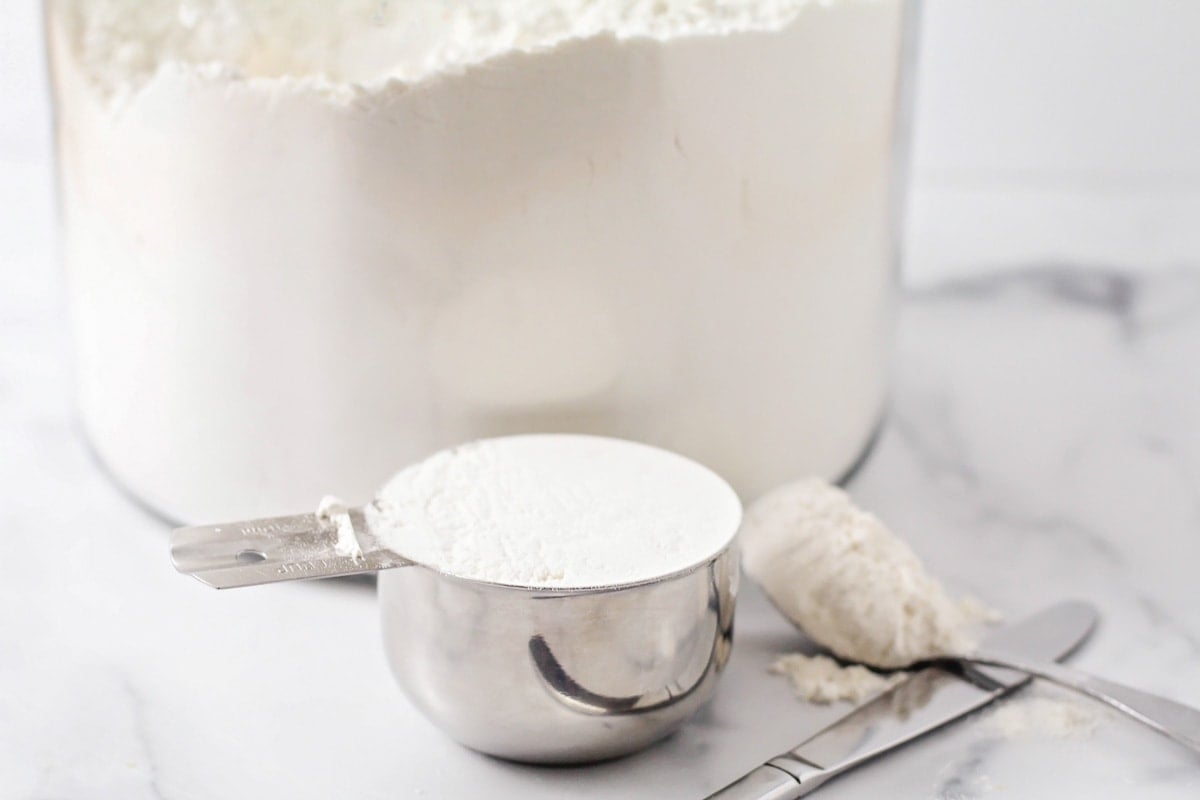
The Science of Measuring Flour
Have you ever eaten the most delicious cookie, got your hands on the recipe, salivated while you baked them, and then in bewilderment said, “I followed the recipe exactly, so why aren’t my cookies the same?”
If you have, you are not alone. Every baker learns pretty quickly that baking is a science and even the smallest change can alter the desired results. One such seemingly small variation is in how you measure the flour.
The most accurate measurement of flour is to weigh it using a kitchen scale. However, in the U.S. most recipes list the amount needed in units of measurement, like cups, instead of by weight. This can be a bit tricky because the method of adding the flour to the measuring cup can yield different amounts.
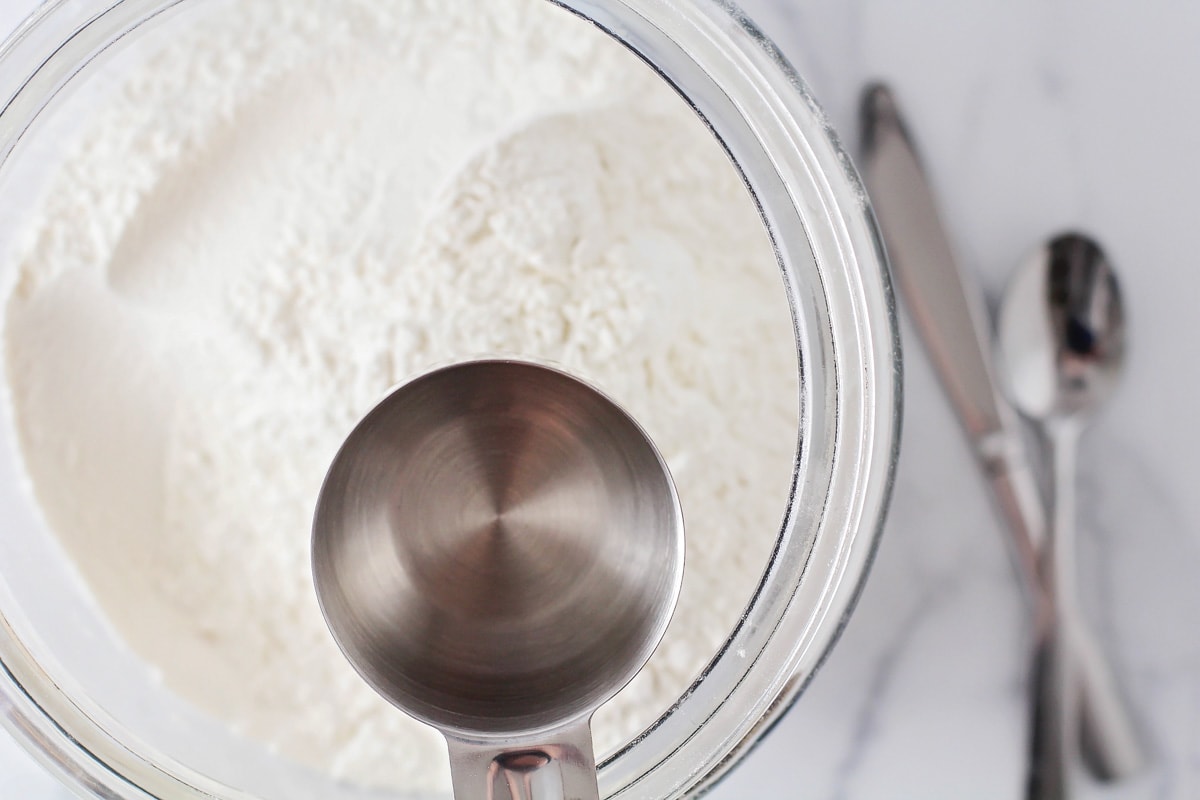
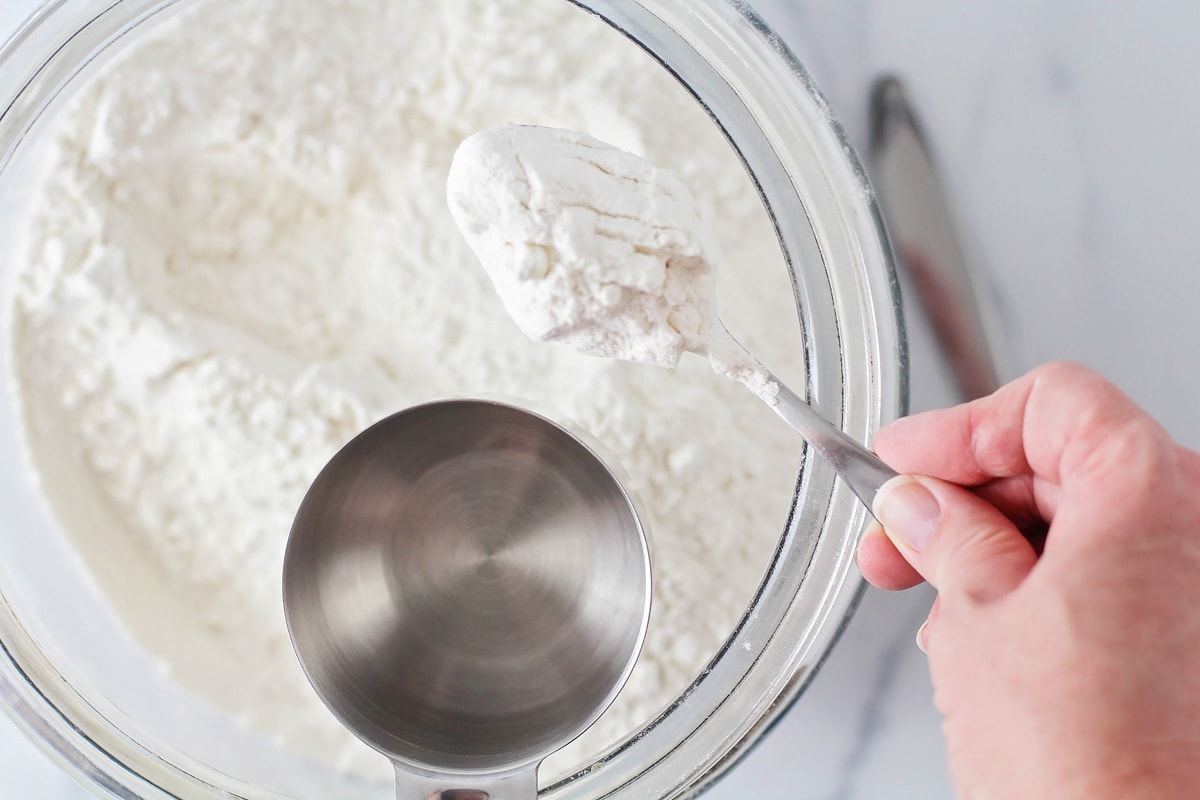
How to Measure Flour
If you want to know how to measure flour correctly these simple steps will set you up for success!
PREP. Use a spoon to fluff the flour.
FILL. Spoon the flour into a measuring cup allowing it to form a small mound. Do not press the flour.
TOP OFF. Using the flat side of a butter knife scrape the top of the measuring cup to push off the excess flour and form a flat smooth top.
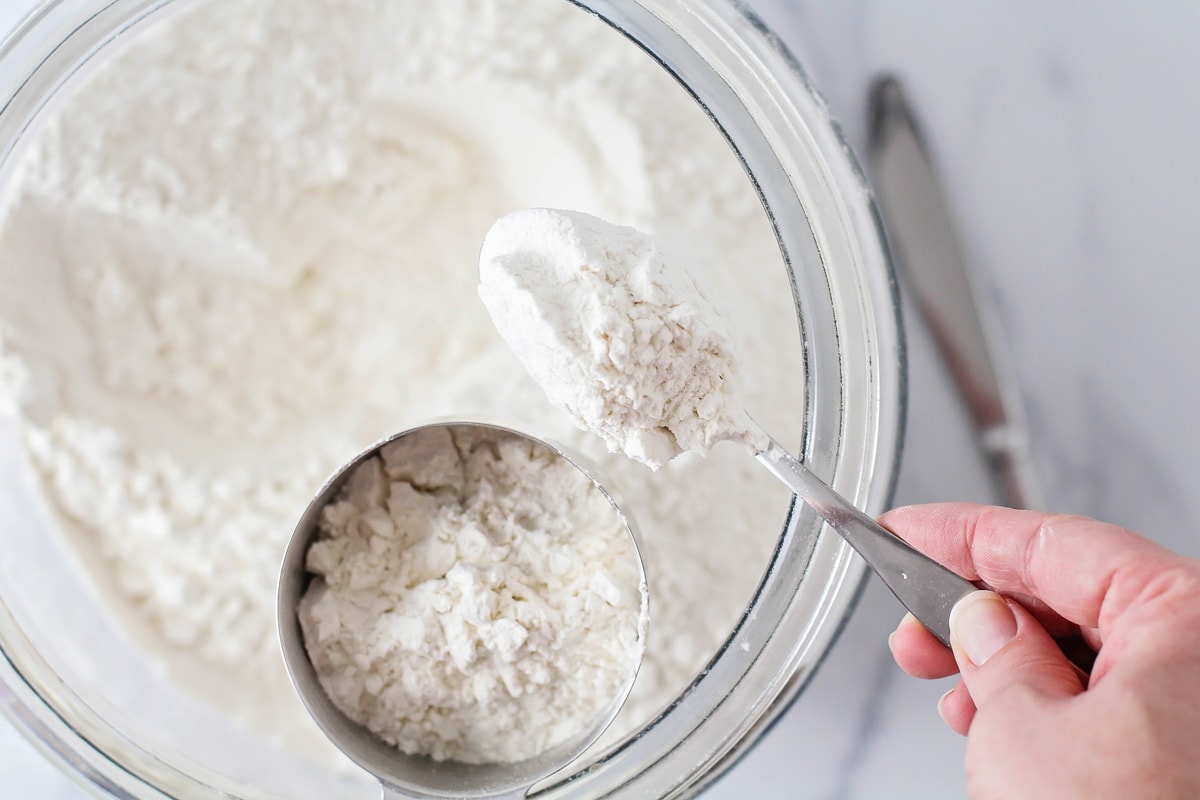
Scooping Up vs. Spooning In
Believe it or not, there is a weight difference between scooping up the flour with the measuring cup and spooning the flour into the measuring cup.
- When you scoop it directly with the measuring cup the flour gets compressed and you can end up packing more flour into the cup than the recipe calls for. A cup of flour that has been scooped and packed cup can weigh up to 155 grams.
- Use the spoon and sweep method. Use a spoon to scoop the flour into the measuring cup until there is a slight mound on top. Then use the back of a butter knife to sweep off the mound leaving you with a flat smooth top. A cup of all-purpose flour that has been spooned and leveled should weigh about 125 grams.
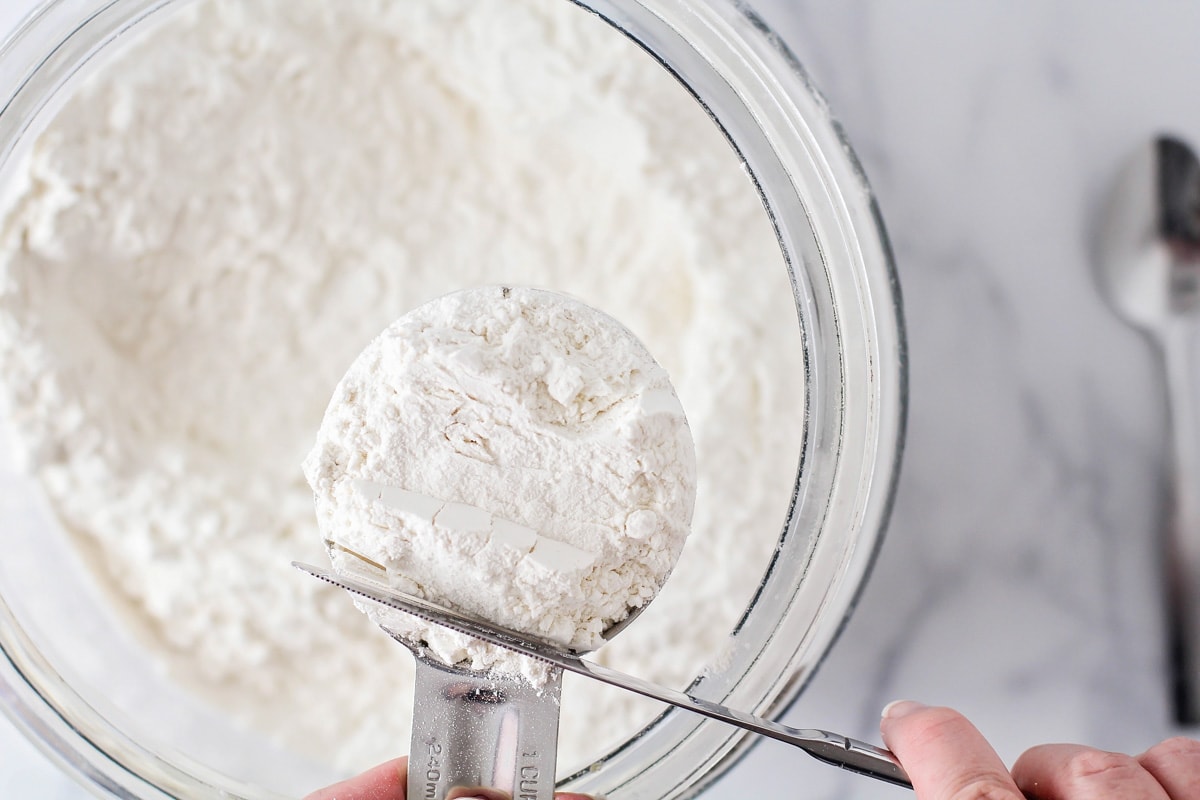
Continued…
Measuring with a kitchen scale. If you do come across a recipe that includes the measurements in weight and you have a digital scale, it is by far the most accurate and will give the most consistent results without having to use any dry measuring cups.
- Place the mixing bowl on the scale.
- Be sure to “tare” the scale which just means to reset the scale so that, even with the weight of the bowl, it reads zero.
- Spoon in the amount of needed flour until you reach the correct weight.
- Tare the scale after adding and weighing each of the dry ingredients.
What does a cup of flour weigh? It depends on the type of flour that the recipe calls for. Use the following information to help determine the amount of flour needed. Keep in mind that these measurements may vary slightly depending on the measuring technique used and the brand of flour.
- One cup of cake flour weighs around 4 ounces or approximately 113 grams.
- One cup of all-purpose flour is approximately 4.5 ounces or roughly 128 grams.
- One cup of whole wheat flour typically weighs around 4.5 ounces or approximately 128 grams.
- One cup of bread flour weighs around 4.8 ounces or about 136 grams.
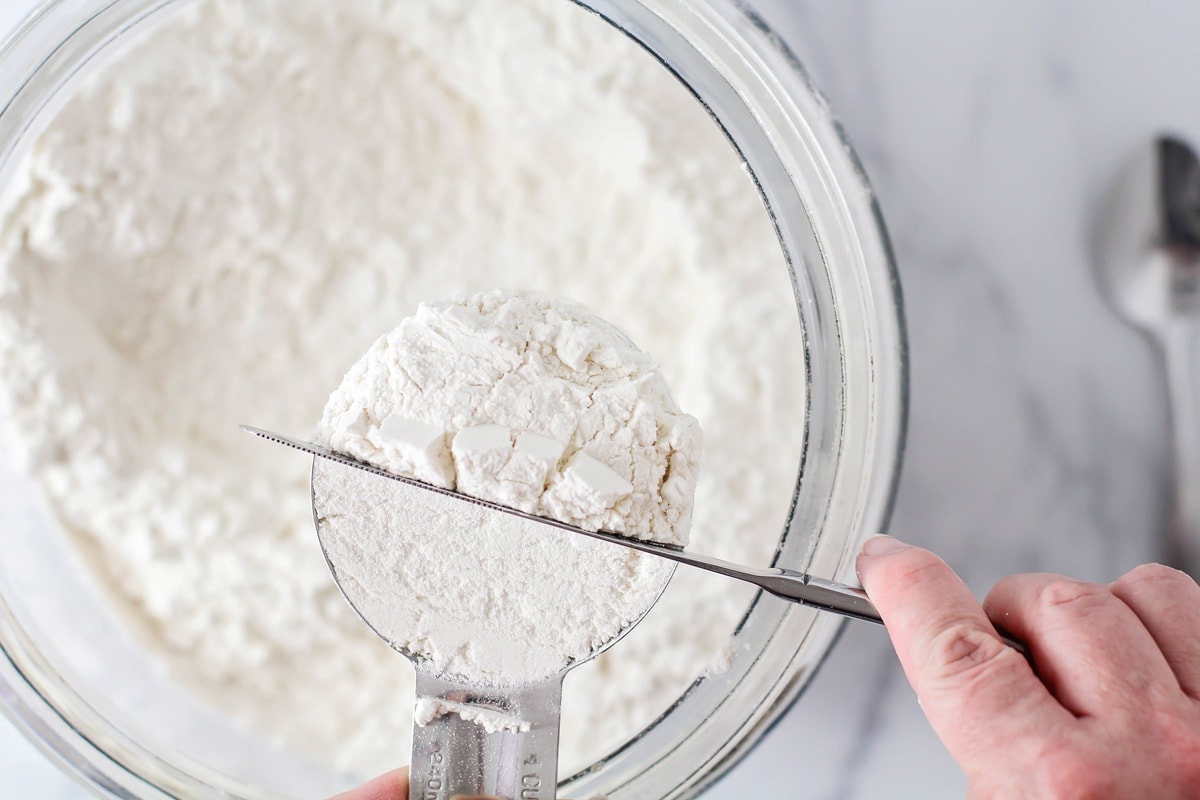
Sifted Flour
Some recipes will ask for sifted flour and is important to note if you need to sift the flour before you measure it or after you measure it. Sifted flour is even more fluffed up than when you use a spoon or fork and therefore lighter. So do you measure flour before or after sifting?
- “1 cup sifted flour”: You need to sift the flour before you spoon it into the measuring cup. If you don’t have a sifter you can pour some flour into a bowl and whisk it vigorously.
- “1 cup flour, sifted”: You will need to spoon the flour into the measuring cup and then sift it.
Notes. When measuring flour keep these in mind:
- When a bag of flour is stored it settles and becomes compacted. The first step to measuring flour is to fluff it up using a spoon or fork.
- Any object with a flat edge can be used to level off the flour such as a butter knife, spatula, and even the flour canister lid.
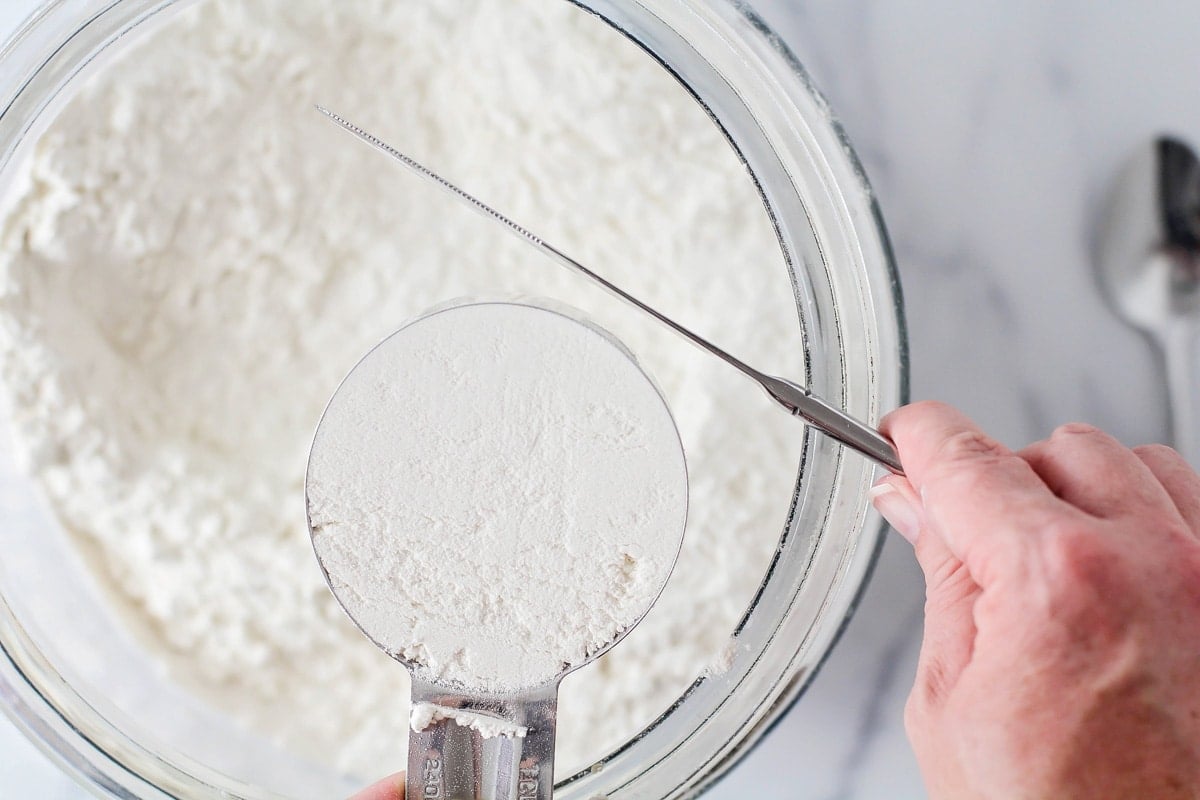
Baking Recipes
Flour is a staple in so many baked goods. Here are just a few examples:
Brownies and Bars: Fudgey Brownies, Blondie Recipe, Banana Bars
Cookies: Chewy Chocolate Chip Cookies, Brown Sugar Cookies, Snickerdoodles,
Cakes: Chiffon Cake, Chocolate Sheet Cake, Lemon Pound Cake
Cupcakes: Peanut Butter Cupcakes, Vanilla Cupcakes, Lemon Cupcakes
Bread: Whole Wheat Bread, French Bread, Cinnamon Bread
Rolls: Orange Rolls, Dinner Rolls, Pumpkin Roll
Muffins: Apple Muffins, Chocolate Muffins, Blueberry Muffins
Quick Breads: Peanut Butter Banana Bread, Lemon Zucchini Bread, Amish Bread
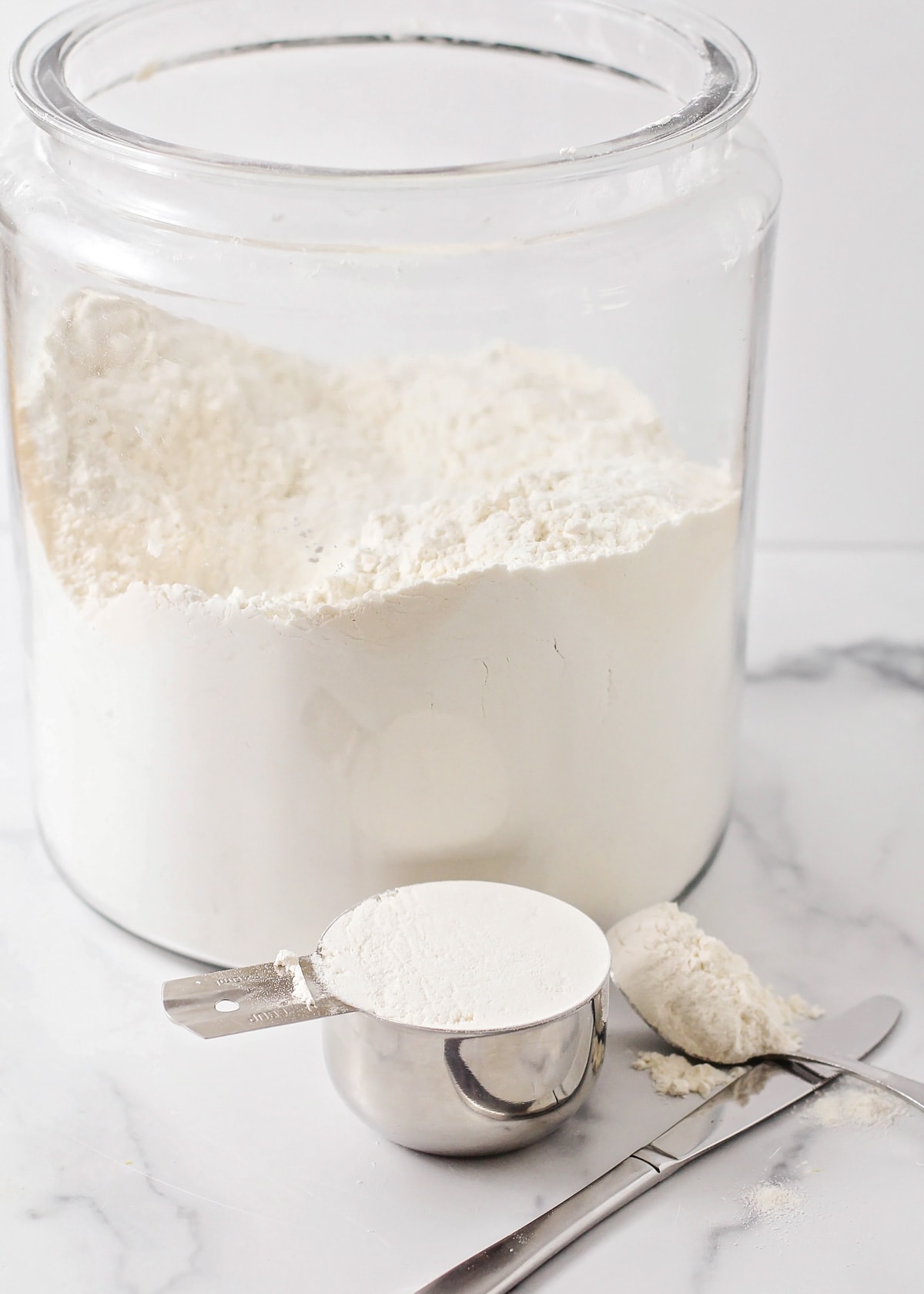
Recipe FAQ
Adding extra flour to a recipe can cause the baked goods to become drier and denser. It can alter the moisture content, texture, and overall taste of the final product. A small amount of extra flour will have a minimal effect, but if you’re adding several scoops, the extra flour can add up.
The spoon and level method is not just for flour, but you can use it to measure instant oats, confectioners sugar, and cocoa powder.
For More Baked Goods, Check Out:
- Homemade Brownies
- Blondie Recipe
- Cookie Bars Recipe
- Sugar Cookie Bars
- 7 Layer Bars
- Lemon Bars
- Banana Bars

How to Measure Flour
Ingredients
- 1 cup flour
Instructions
- Use a spoon to fluff the flour.
- Spoon the flour into a measuring cup allowing it to form a small mound. Do not press the flour.
- Using the flat side of a butter knife scrape the top of the measuring cup to push off the excess flour and form a flat smooth top.
Video
Nutrition
Nutrition information is automatically calculated, so should only be used as an approximation.









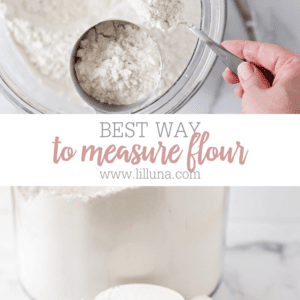
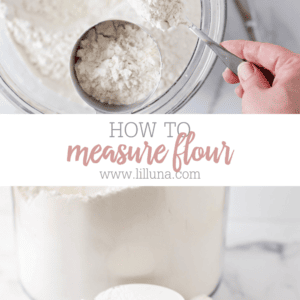
I’m shaking my head as I read this article. I love your recipes, but frankly, you’re not helping the “how much flour is in a cup” confusion. Depending on the method used, a cup of flour can weigh up to 155 grams. You state a cup of all-purpose flour weighs appx. 128 grams, when every single bag of American flour says it is 120 grams. King Arthur’s bread flour is 120 grams per cup; you say 136 grams. Your cake flour weighs 113 grams per cup & King Arthur’s is 128 grams. I apologize for the rant, but flour is the most important ingredient in baking & the amounts used by bakers for a cup are all over the place. Why can’t we all just follow the numbers given by the flour manufacturers???? Again, my apologies.
I appreciate your feedback!